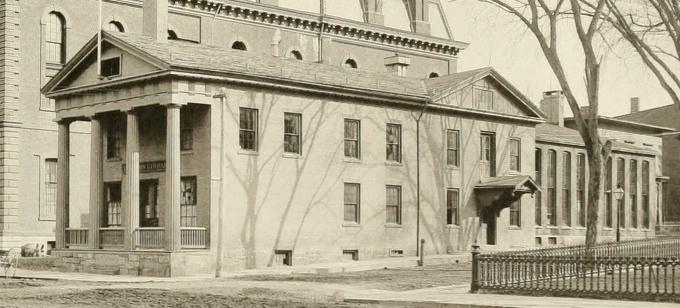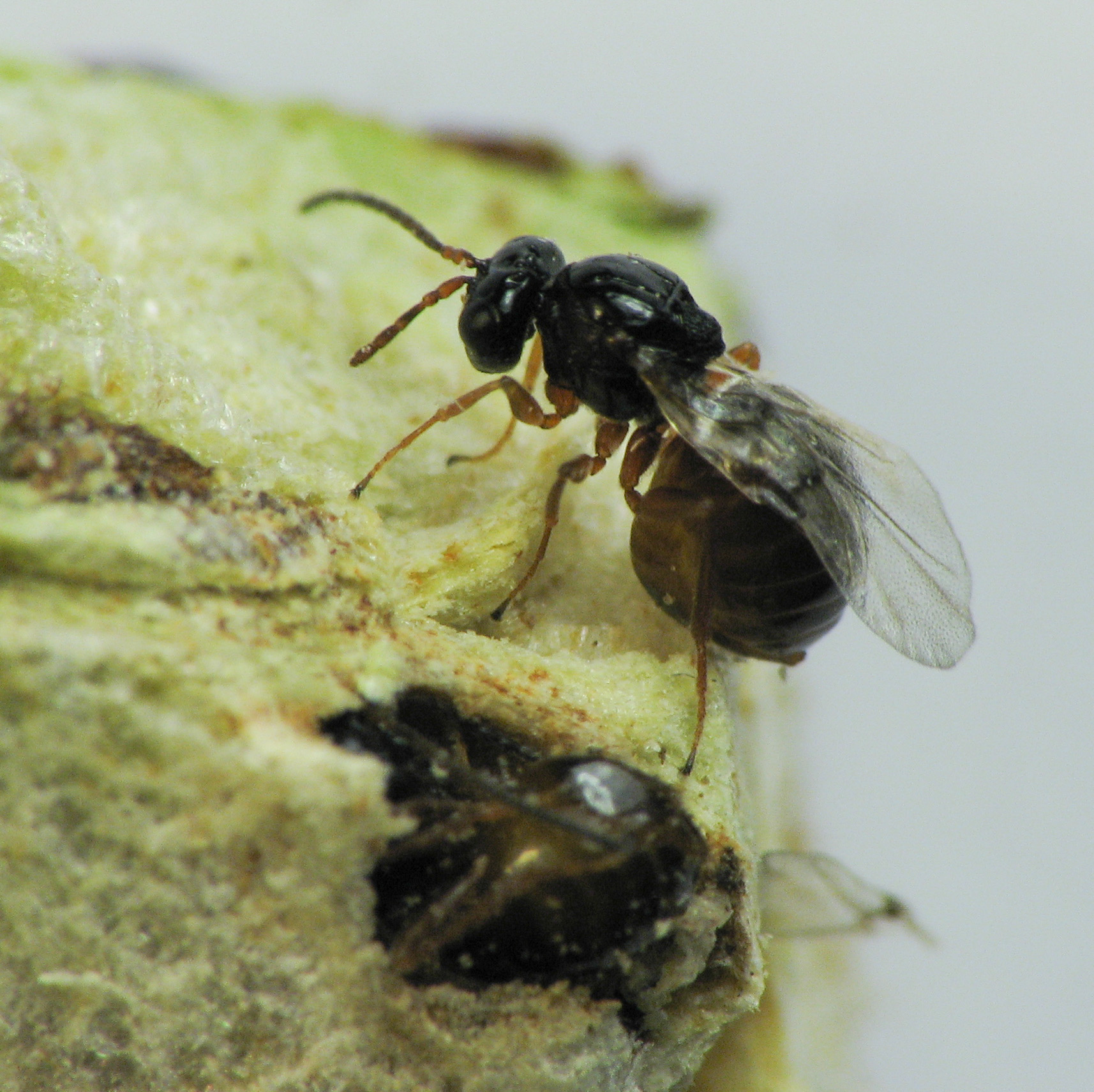|
Andricus Quercuspetiolicola
''Andricus quercuspetiolicola'', also called the oak petiole gall wasp, is a species of Cynipini, oak gall wasp in the Family (biology), family Gall wasp, Cynipidae. Galls in which the larvae live and feed are formed along the midrib or Petiole (botany), petiole of Oak#Subgenus Quercus, white oak leaves.Weld, L. Hart. (1959). Cynipid galls of the Eastern United States. Ann Arbor, Mich. Range This species occurs throughout the eastern half of North America where its host plants grow. Galls The oak petiole gall wasp forms galls on Oak, white oaks, including ''Quercus alba'', ''Quercus bicolor, Q. bicolor'', ''Quercus montana, Q. montana'', ''Quercus macrocarpa, Q. macrocarpa'', ''Quercus michauxii, Q. michauxii'', ''Quercus prinoides, Q. prinoides'', and ''Quercus stellata, Q. stellata''. The galls of the sexual generation are round or club-shaped and formed on the petiole or midrib of the leaves in spring, with adults of both sexes emerging from galls in late June and early ... [...More Info...] [...Related Items...] OR: [Wikipedia] [Google] [Baidu] |
Homer Franklin Bassett
Homer Franklin Bassett (September 2, 1826 – June 28, 1902) was an American hymenopterist specializing in gall wasps. In addition, he was the librarian of Silas Bronson Library in Waterbury, Connecticut. Early life and education Bassett was born on September 2, 1826 in the town of Florida, Massachusetts. His parents were Ezra and Keziah (née Witt) Bassett. In 1836 he and his father moved to Rockport, Ohio. He enrolled in Oberlin College in 1847, but due to poor health he had to leave the following year. He returned to New England in 1849. Work as librarian Bassett worked at the Silas Bronson Library in Waterbury, Connecticut for nearly thirty years. He started work on September 1, 1872 after the resignation of W. I. Fletcher, its first librarian. The number of volumes in the library more than quadrupled in his first five years. Bassett also made a card catalog of the collection's 2,800 pamphlets. He also was the librarian during the move to a new building in 1894. He al ... [...More Info...] [...Related Items...] OR: [Wikipedia] [Google] [Baidu] |
Quercus Macrocarpa
''Quercus macrocarpa'', the bur oak or burr oak, is a species of oak tree native to eastern North America. It is in the white oak section, ''Quercus'' sect. ''Quercus'', and is also called mossycup oak, mossycup white oak, blue oak, or scrub oak. The acorns are the largest of any North American oak (thus the species name ''macrocarpa'', from Ancient Greek "large" and "fruit"), and are important food for wildlife. Description ''Quercus macrocarpa'' is a large deciduous tree growing up to , rarely , in height, and is one of the most massive oaks with a trunk diameter of up to ; reports of taller trees occur, but have not been verified. It is one of the slowest-growing oaks, with a growth rate of per year when young. However, one source states that a well-established tree can grow up to per year. A 20-year-old tree will be about tall if grown in full sun. Naturally occurring saplings in forests will typically be older. Bur oaks commonly get to be 200 to 300 years old, and ma ... [...More Info...] [...Related Items...] OR: [Wikipedia] [Google] [Baidu] |
Insects Described In 1863
Insects (from Latin ') are pancrustacean hexapod invertebrates of the class Insecta. They are the largest group within the arthropod phylum. Insects have a chitinous exoskeleton, a three-part body (head, thorax and abdomen), three pairs of jointed legs, compound eyes and one pair of antennae. Their blood is not totally contained in vessels; some circulates in an open cavity known as the haemocoel. Insects are the most diverse group of animals; they include more than a million described species and represent more than half of all known living organisms. The total number of extant species is estimated at between six and ten million; In: potentially over 90% of the animal life forms on Earth are insects. Insects may be found in nearly all environments, although only a small number of species reside in the oceans, which are dominated by another arthropod group, crustaceans, which recent research has indicated insects are nested within. Nearly all insects hatch from eggs. Insect ... [...More Info...] [...Related Items...] OR: [Wikipedia] [Google] [Baidu] |
Oak Galls
Oak apple or oak gall is the common name for a large, round, vaguely apple-like gall commonly found on many species of oak. Oak apples range in size from in diameter and are caused by chemicals injected by the larva of certain kinds of gall wasp in the family Cynipidae. The adult female wasp lays single eggs in developing leaf buds. The wasp larvae feed on the gall tissue resulting from their secretions, which modify the oak bud into the gall, a structure that protects the developing larvae until they undergo metamorphosis into adults. Considerable confusion exists in the general literature between the oak apple and the oak marble gall. The oak marble is frequently called the oak apple due to the superficial resemblance and the preponderance of the oak marble gall in the wild. Other galls found on oak trees include the oak artichoke gall and the acorn cup gall, but each of these has its own distinctive form. Some common oak-apple-forming species are the '' Biorhiza p ... [...More Info...] [...Related Items...] OR: [Wikipedia] [Google] [Baidu] |
Cynipidae
Gall wasps, also incorrectly called gallflies, are hymenopterans of the family Cynipidae in the wasp superfamily Cynipoidea. Their common name comes from the galls they induce on plants for larval development. About 1,300 species of this generally very small creature (1–8 mm) are known worldwide, with about 360 species of 36 different genera in Europe and some 800 species in North America. Features Like all Apocrita, gall wasps have a distinctive body shape, the so-called wasp waist. The first abdominal tergum (the propodeum) is conjoined with the thorax, while the second abdominal segment forms a sort of shaft, the petiole. The petiole connects with the gaster, which is the functional abdomen in apocritan wasps, starting with the third abdominal segment proper. Together, the petiole and the gaster form the metasoma, while the thorax and the propodeum make up the mesosoma. The antennae are straight and consist of two or three segments. In many varieties, the backside ... [...More Info...] [...Related Items...] OR: [Wikipedia] [Google] [Baidu] |
Synonym (taxonomy)
The Botanical and Zoological Codes of nomenclature treat the concept of synonymy differently. * In botanical nomenclature, a synonym is a scientific name that applies to a taxon that (now) goes by a different scientific name. For example, Linnaeus was the first to give a scientific name (under the currently used system of scientific nomenclature) to the Norway spruce, which he called ''Pinus abies''. This name is no longer in use, so it is now a synonym of the current scientific name, ''Picea abies''. * In zoology, moving a species from one genus to another results in a different binomen, but the name is considered an alternative combination rather than a synonym. The concept of synonymy in zoology is reserved for two names at the same rank that refers to a taxon at that rank - for example, the name ''Papilio prorsa'' Linnaeus, 1758 is a junior synonym of ''Papilio levana'' Linnaeus, 1758, being names for different seasonal forms of the species now referred to as ''Araschnia le ... [...More Info...] [...Related Items...] OR: [Wikipedia] [Google] [Baidu] |
Andricus
''Andricus'' is a genus of oak gall wasps in the family Cynipidae. Life cycle As in all Hymenoptera, sex-determination in species of the genus ''Andricus'' is governed by haplodiploidy: males develop from unfertilized eggs and are haploid, and females develop from fertilized eggs and are diploid. Many species in the genus alternate between an asexual generation and a sexual generation. Species The taxonomy of the genus ''Andricus'' is uncertain, with many of the approximately 375 species considered dubious. The following species are currently recognised in the genus ''Andricus'': * '' Andricus aciculatus'' Beutenmuller, 1909 * '' Andricus ahmeti'' Melika, Mutun & Dinç, 2014 * ''Andricus albicomus'' Weld, 1952 * '' Andricus albipes'' Hartig, 1840 * '' Andricus albobalani'' Weld, 1926 * '' Andricus alniensis'' Folliot, 1964 * ''Andricus amblycerus'' (Giraud, 1859) * ''Andricus amenti'' Giraud, 1859 * ''Andricus amphorus'' (Weld, 1926) * ''Andricus analis'' (Fonscolombe, 18 ... [...More Info...] [...Related Items...] OR: [Wikipedia] [Google] [Baidu] |
Genus
Genus ( plural genera ) is a taxonomic rank used in the biological classification of extant taxon, living and fossil organisms as well as Virus classification#ICTV classification, viruses. In the hierarchy of biological classification, genus comes above species and below family (taxonomy), family. In binomial nomenclature, the genus name forms the first part of the binomial species name for each species within the genus. :E.g. ''Panthera leo'' (lion) and ''Panthera onca'' (jaguar) are two species within the genus ''Panthera''. ''Panthera'' is a genus within the family Felidae. The composition of a genus is determined by taxonomy (biology), taxonomists. The standards for genus classification are not strictly codified, so different authorities often produce different classifications for genera. There are some general practices used, however, including the idea that a newly defined genus should fulfill these three criteria to be descriptively useful: # monophyly – all descendants ... [...More Info...] [...Related Items...] OR: [Wikipedia] [Google] [Baidu] |
Euderus Set
''Euderus set'', the crypt-keeper wasp, is a tiny chalcid wasp from the family Eulophidae from the United States, described in 2017 as a parasitoid of the gall wasp ''Bassettia pallida'', and the description of its life cycle attracted widespread publicity. Description The predominant colour of the adult wasp is metallic green to turquoise to iridescent blue, depending on age, with a yellow scape and white tarsi which have a dark brown terminal segment. Females are 1.6mm to 2.3mm in length, males are 1.2mm to 1.6mm. One of the parasitologists to describe the species was Kelly Weinersmith. Distribution and habitat The type locality of ''Euderus set'' was Inlet Beach, Florida and it has since been recorded throughout the midwestern, southcentral and southeastern United States. Specimens have been collected from galls on oaks from several subsections of the genus ''Quercus.'' Biology The female ''Euderus set'' searches for the galls or "crypts" induced by the gall wasps ''Basse ... [...More Info...] [...Related Items...] OR: [Wikipedia] [Google] [Baidu] |
Parasitoid Wasp
Parasitoid wasps are a large group of hymenopteran superfamilies, with all but the wood wasps (Orussoidea) being in the wasp-waisted Apocrita. As parasitoids, they lay their eggs on or in the bodies of other arthropods, sooner or later causing the death of these hosts. Different species specialise in hosts from different insect orders, most often Lepidoptera, though some select beetles, flies, or bugs; the spider wasps (Pompilidae) exclusively attack spiders. Parasitoid wasp species differ in which host life-stage they attack: eggs, larvae, pupae, or adults. They mainly follow one of two major strategies within parasitism: either they are endoparasitic, developing inside the host, and koinobiont, allowing the host to continue to feed, develop, and moult; or they are ectoparasitic, developing outside the host, and idiobiont, paralysing the host immediately. Some endoparasitic wasps of the superfamily Ichneumonoidea have a mutualistic relationship with polydnaviruses, the vir ... [...More Info...] [...Related Items...] OR: [Wikipedia] [Google] [Baidu] |
Agamic
Religion *Āgama (Buddhism), a collection of Early Buddhist texts *Āgama (Hinduism), scriptures of several Hindu sects *Jain literature (Jain Āgamas), various canonical scriptures in Jainism Other uses * ''Agama'' (lizard), a genus of lizards in the family Agamidae ** ''Agama agama'', a species of lizard from the family Agamidae * Religion, referred to as ''agama'' in the Malay-speaking world (Indonesia, Malaysia, Singapore, Brunei) * Parthenogenesis Parthenogenesis (; from the Greek grc, παρθένος, translit=parthénos, lit=virgin, label=none + grc, γένεσις, translit=génesis, lit=creation, label=none) is a natural form of asexual reproduction in which growth and development ... or agamic, a form of asexual reproduction not involving the fusion of male and female gametes See also * Agam (other) {{disambiguation ... [...More Info...] [...Related Items...] OR: [Wikipedia] [Google] [Baidu] |







_(7686081848).jpg)